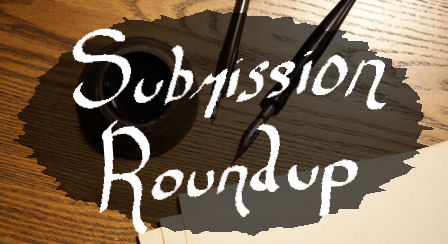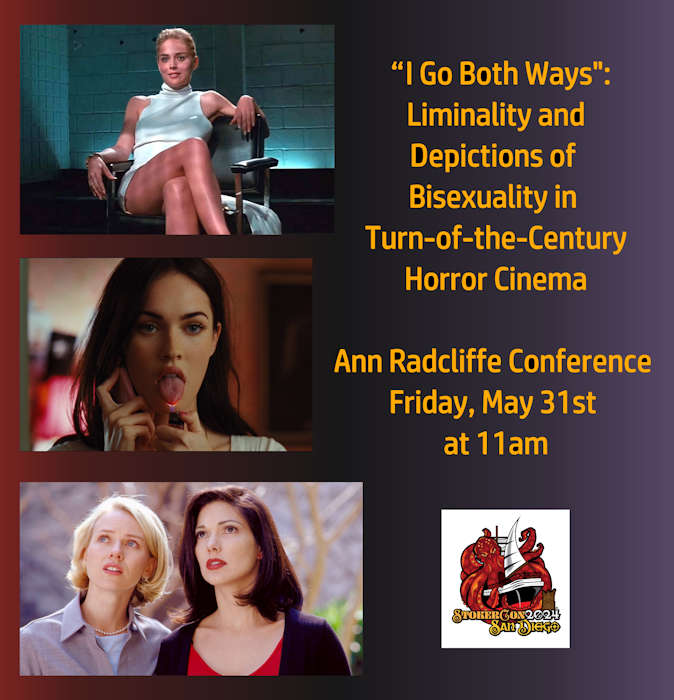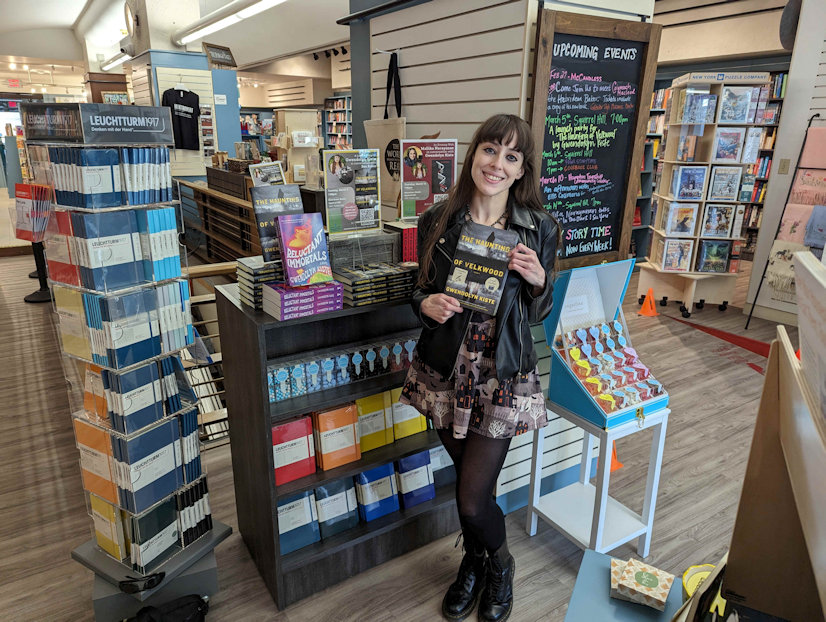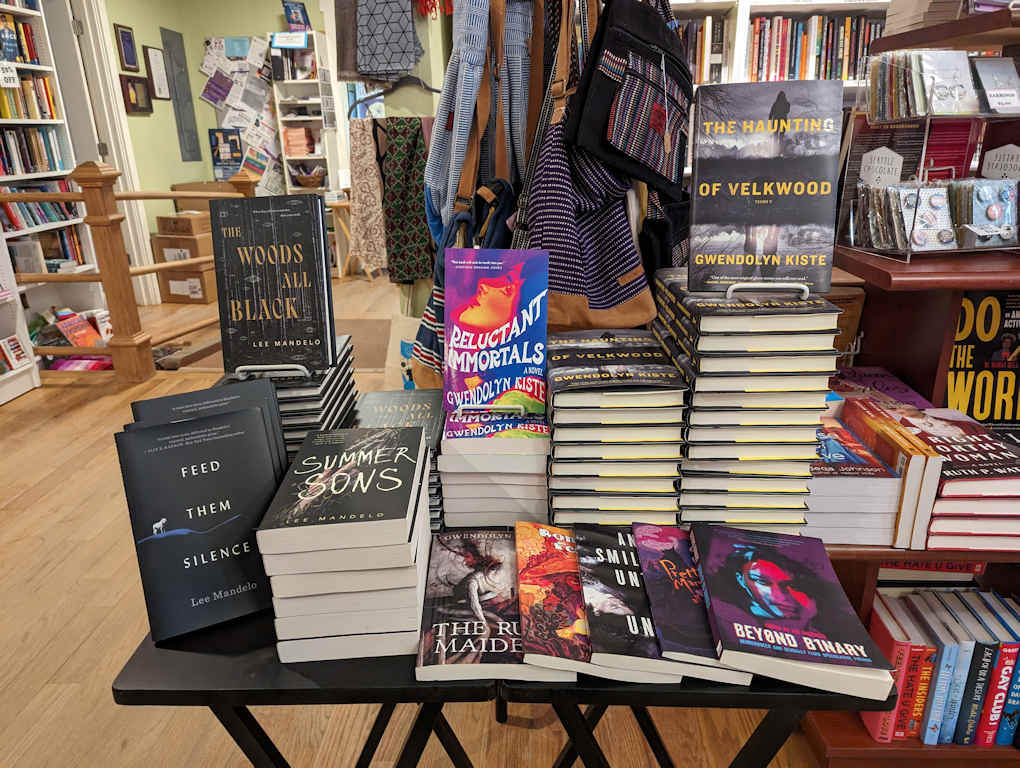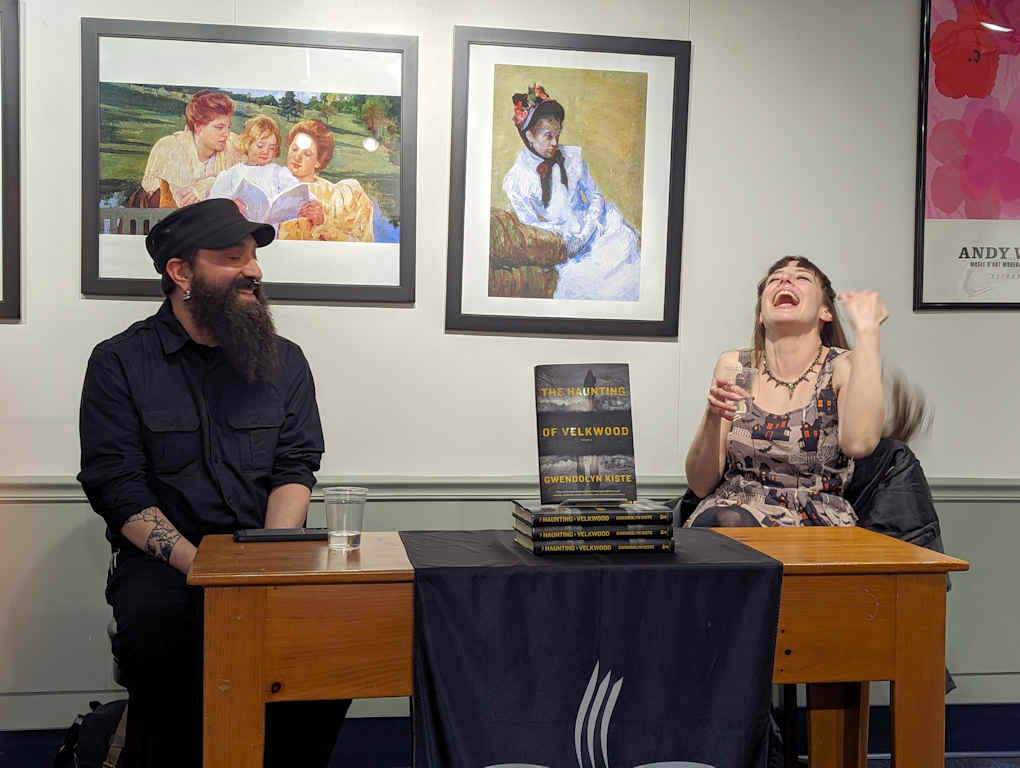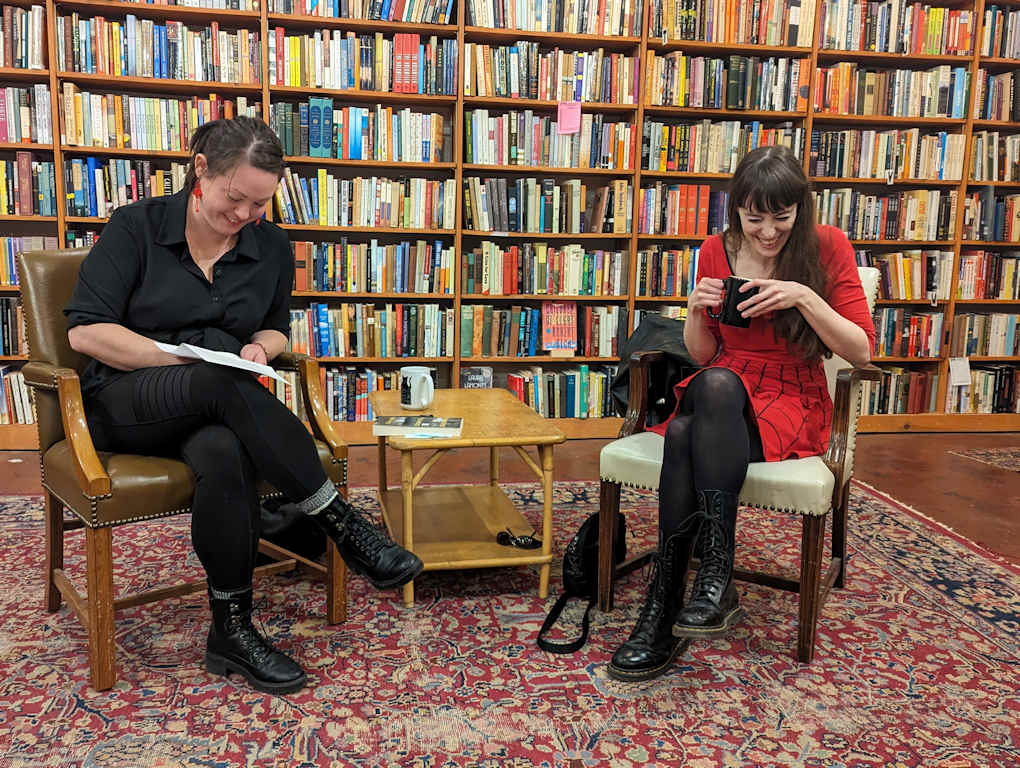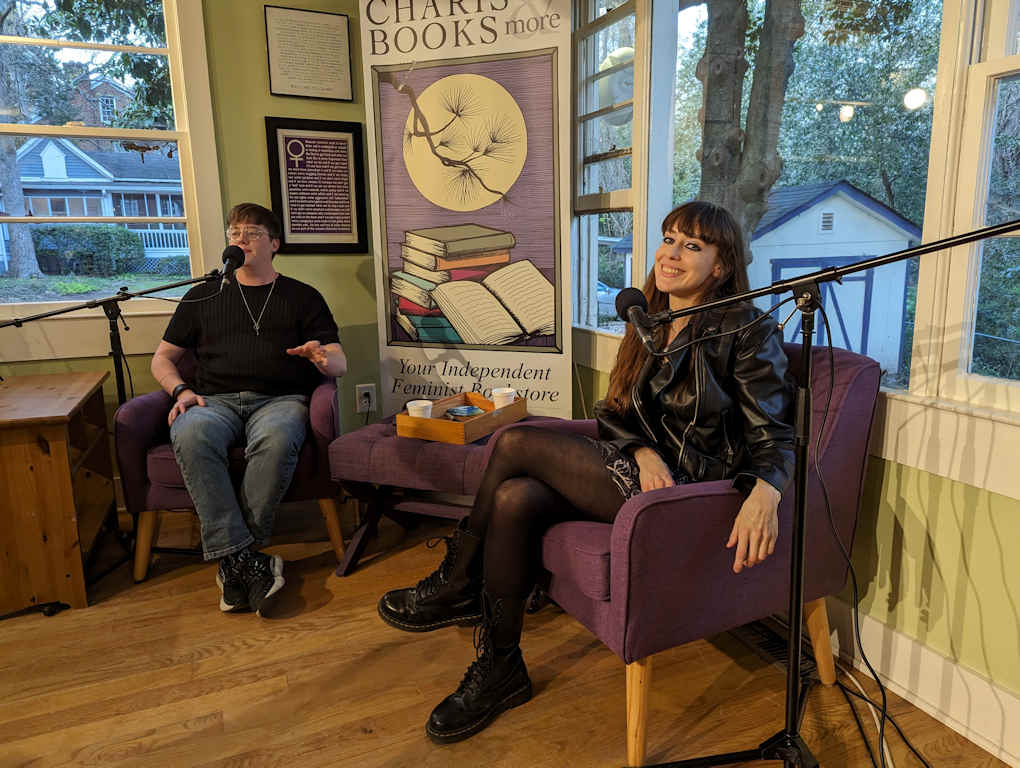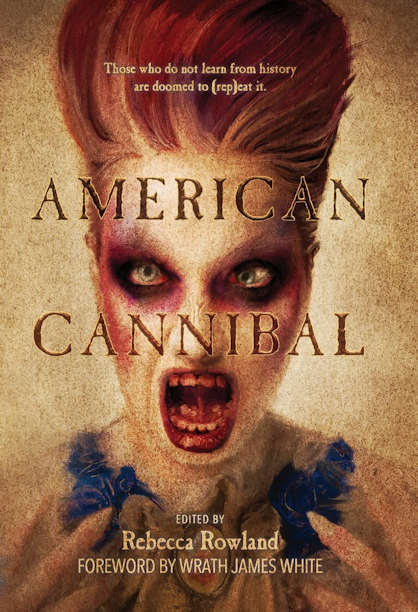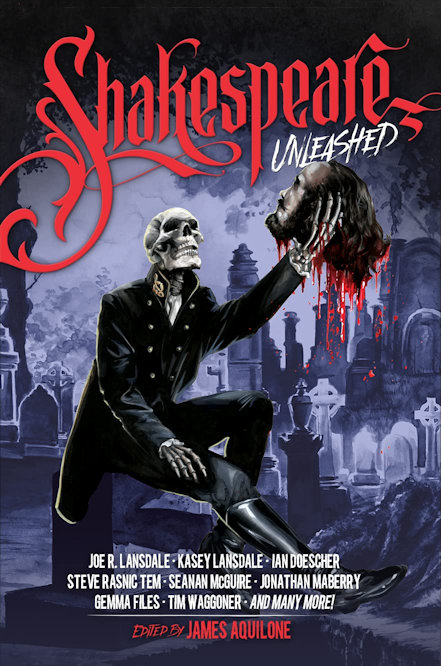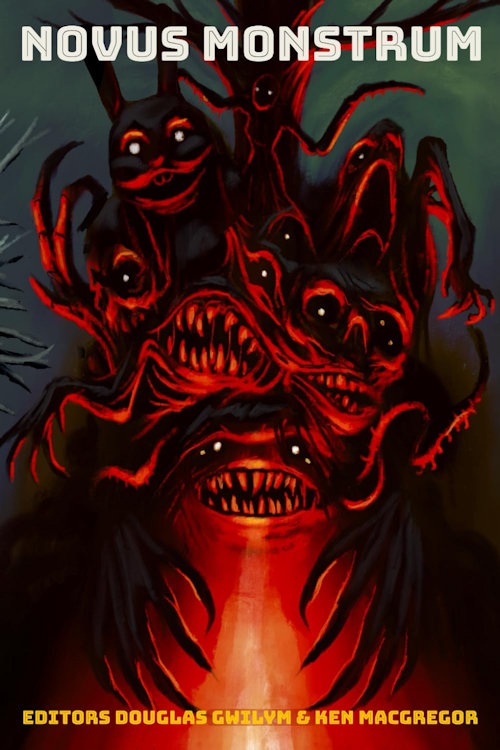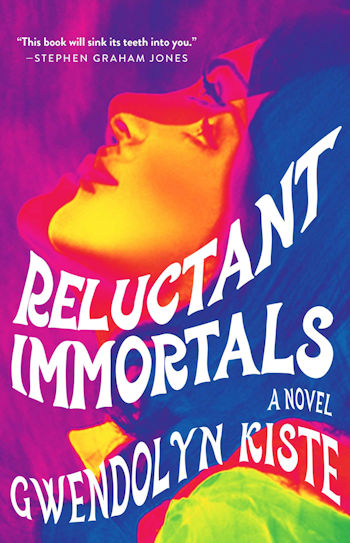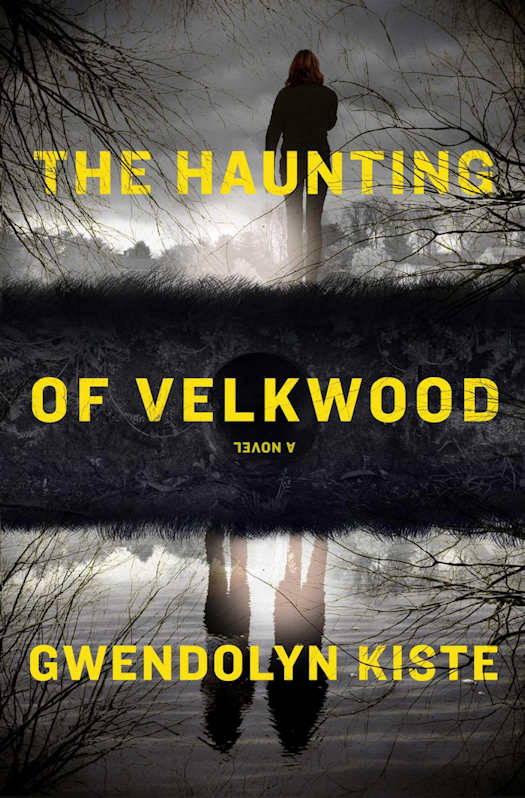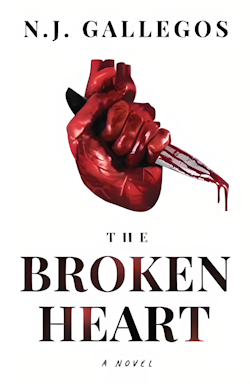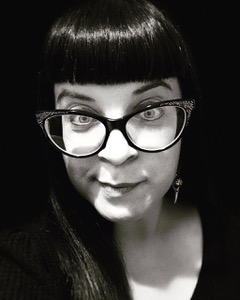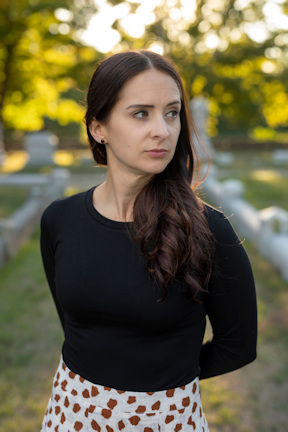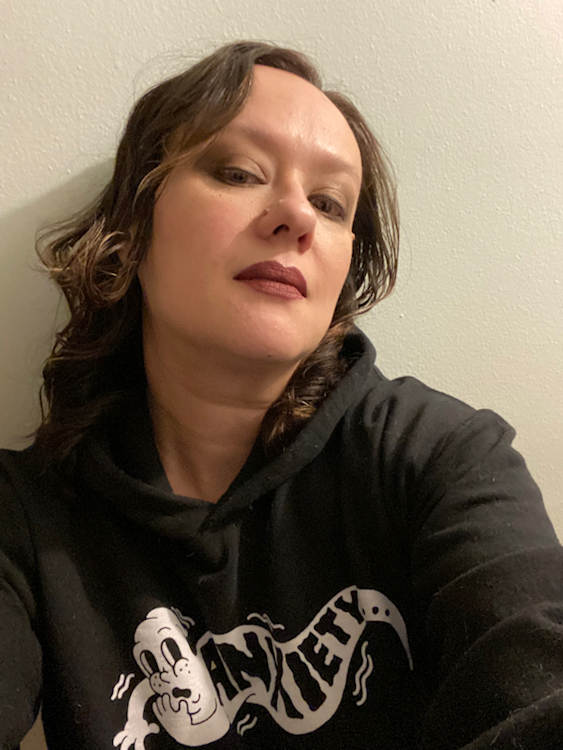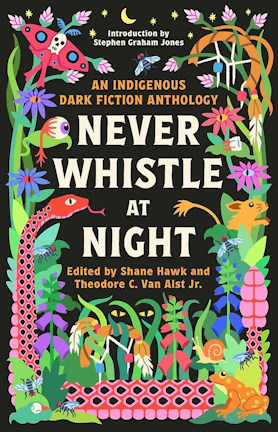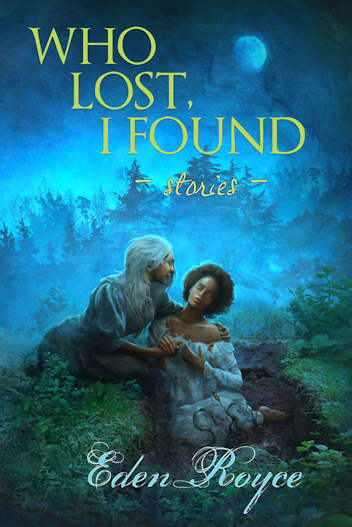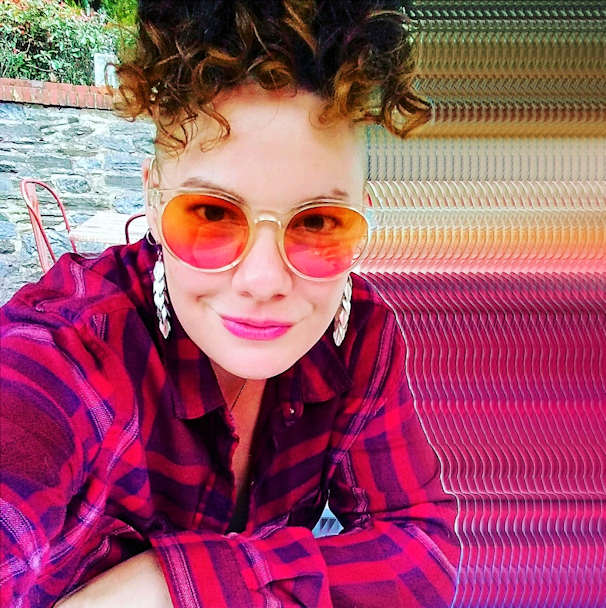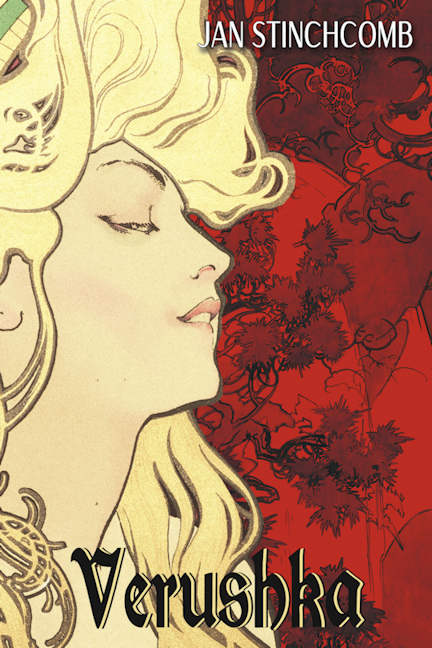Welcome back! This month, I’m thrilled to spotlight the work of eight fantastic authors and editors who have new books out this year! I always love putting together these roundtables because it gives me a chance to talk with so many great creators at once. And fortunately for the genre, we’ve got so much talent out there right now!
So without further adieu, I’m pleased to let November’s highlighted authors take it away!
Thank you so much for being part of my fall roundtable. Please tell us a little bit about your latest book.
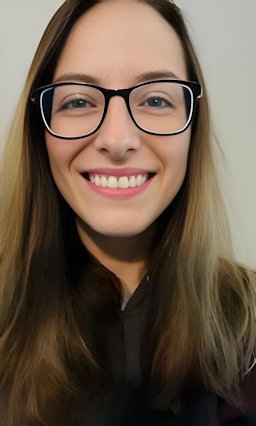 N.J. GALLEGOS: The Broken Heart follows Casey Philips, an abused housewife and mother of two, who suffers from heart failure during her second pregnancy and receives a transplant from a serial killer. She undergoes a dark transformation, becoming the anti-hero you can’t help but root for… even as the body count rises.
N.J. GALLEGOS: The Broken Heart follows Casey Philips, an abused housewife and mother of two, who suffers from heart failure during her second pregnancy and receives a transplant from a serial killer. She undergoes a dark transformation, becoming the anti-hero you can’t help but root for… even as the body count rises.
SHANE HAWK: Hohóu for including me in the first place! Yes, my latest book is a 26-story anthology titled Never Whistle at Night: An Indigenous Dark Fiction Anthology. I helped co-edit it, alongside my friend, Theodore C. Van Alst Jr. NWAN was published by Penguin Random House on September 19th, 2023 in the US and Canada, and it has made the top 10 bestselling books list every week since then, making it an international bestseller. Its contents comprise twelve established writers, twelve lesser-known writers, the two of us editors, and an amazing foreword from Stephen Graham Jones that contextualizes the entire work. Mood-wise, the stories range from creepy to mournful to downright hair-raising, and the subject matter explores Indigeneity inside and out while introducing the reader to supernatural monsters, ghosts, all-too-real human monsters, and more. There’s something for everyone in this anthology whether it be a hard-and-fast genre piece ripping you to shreds, or a heartbreaking literary horror piece that stays in your head for months rent-free.
ANGELA SYLVAINE: Thank you very much for having me! My latest book is called Frost Bite, and it’s an LGBTQ+ ‘90s sci-fi horror comedy. Frost Bite is about a small North Dakota town that gets hit by a meteor, which infects the hibernating prairie dogs with alien worms. Recent high-school graduate, Realene, and her best friend, Nate, fight to save the town from the creatures’ memory-stealing bite while also battling a doomsday cult who thinks the meteor is a sign of the
apocalypse.
JESSICA MCHUGH: Thank you so much for inviting me to participate, Gwendolyn! The Quiet Ways I Destroy You is a cosmic horror blackout poetry collection created from and inspired by Louisa May Alcott’s Little Women. Because that novel celebrated its 155th publication anniversary, I challenged myself to tell a story of self-exploration, feminine rage, and transformative sisterhood in 155 unique pieces, some of which are the largest and most complex blackout poems I’ve ever made. It’s a beautiful beast of a book, and I’m so jazzed it’s out in the world.
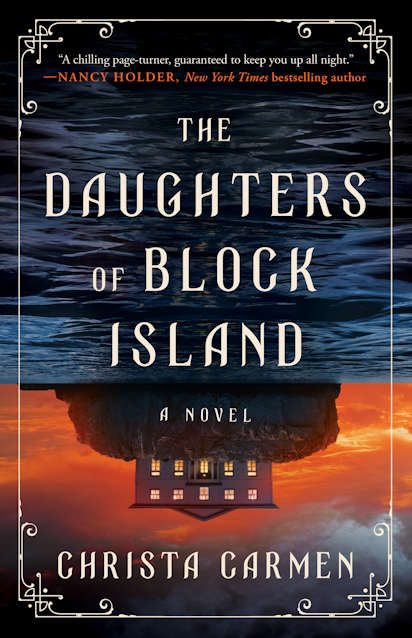 CHRISTA CARMEN: The Daughters of Block Island is my take on the gothic, the culmination of years of reading books like The Monk and Rebecca and wanting to throw my hat in the ring of decaying castles and damsels in distress. Like many popular subgenres, the gothic has been done to death, so I had to ensure I was bringing something new to readers, ultimately deciding to “make gothic meta,” with my poor tragic heroine, Blake Bronson, believing herself to be in the quintessential gothic novel. The book is also inspired, in part, by the Twa Sisters murder ballad, as well as the Scream film franchise, so there is a little something for everyone within its rain(-and-blood!)-soaked pages.
CHRISTA CARMEN: The Daughters of Block Island is my take on the gothic, the culmination of years of reading books like The Monk and Rebecca and wanting to throw my hat in the ring of decaying castles and damsels in distress. Like many popular subgenres, the gothic has been done to death, so I had to ensure I was bringing something new to readers, ultimately deciding to “make gothic meta,” with my poor tragic heroine, Blake Bronson, believing herself to be in the quintessential gothic novel. The book is also inspired, in part, by the Twa Sisters murder ballad, as well as the Scream film franchise, so there is a little something for everyone within its rain(-and-blood!)-soaked pages.
J.A.W. MCCARTHY: Thank you so much for inviting me! My queer succubi sex, drugs and rock & roll novella SLEEP ALONE was released by Off Limits Press in March 2023. It takes place over one week in the lives of merch girl Ronnie and the touring rock band she turned into succubi like herself. Since she turned them six years ago, they’ve lived on the road, constantly fleeing the destruction they leave in their wake from feeding on the memories, energy, strength, and talents of their prey. It’s a seedy, lonely existence. Then everything changes when Ronnie meets the mysterious and magnetic Helene at a show. With Helene in tow, the band crosses the Pacific Northwest as a mysterious disease stalks these succubi and destroys everything, from their relationships with each other to their very existences.
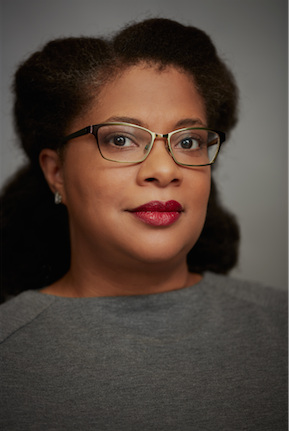 EDEN ROYCE: Who Lost, I Found is a collection of short stories in various speculative fiction genres ranging from Southern Gothic and folk horror to Afro-surrealism and dark fantasy, finally culminating in a tale to lift a little of the darkness. Essentially, it’s Black Southern horror, encompassing Gullah Geechee folklore, ancestry, warnings, conjure, survival, and celebration of enduring for a night.
EDEN ROYCE: Who Lost, I Found is a collection of short stories in various speculative fiction genres ranging from Southern Gothic and folk horror to Afro-surrealism and dark fantasy, finally culminating in a tale to lift a little of the darkness. Essentially, it’s Black Southern horror, encompassing Gullah Geechee folklore, ancestry, warnings, conjure, survival, and celebration of enduring for a night.
These stories utilize methods many editors will tell you don’t work: second-person point of view, inactive protagonists, the use of dialect… all hallmarks of my people’s storytelling traditions. Some of these stories are grounded in truth, others in fantasy, but they are all valid aspects of storytelling. This collection defies the odds and, like my people have always done, makes its own way when there was none.
JAN STINCHCOMB: Verushka is a multi-POV family novel with a young female protagonist. It draws from the genres of fairy tale and horror and goes back and forth in time. It’s not YA but I have a secret fantasy of parents reading this book with their kids.
What in particular makes your current project different from your previous books?
N.J. GALLEGOS: This is my first full length novel so that’s different in itself! I have three novellas to compare and contrast with though. I feel like the character development in The Broken Heart was more fleshed out and I found myself getting attached to Casey more than any other character I’ve written. The Broken Heart tackles my favorite theme of female vengeance, also seen in my novella Just Desserts where an awkward, previously bullied woman attends her 20-year high school reunion… don’t eat the tiramisu.
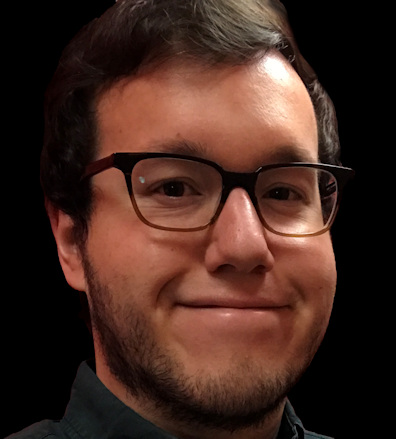 SHANE HAWK: I’m still relatively emerging in the game that is Horror fiction, so I only really have one previous short story collection (Anoka: An Indigenous Horror Collection) and other short fiction scattered throughout other anthologies. This book is the first wherein I’m in both the editor’s seat as well as the writer’s seat. It’s also the first of hopefully many to be published at the Big-5 level—I’m entirely grateful for the amount of work put in by our American and Canadian teams, lots of things the average reader isn’t aware of, and the support is quite different than self-publishing or indie presses. It’s really a learning experience every day.
SHANE HAWK: I’m still relatively emerging in the game that is Horror fiction, so I only really have one previous short story collection (Anoka: An Indigenous Horror Collection) and other short fiction scattered throughout other anthologies. This book is the first wherein I’m in both the editor’s seat as well as the writer’s seat. It’s also the first of hopefully many to be published at the Big-5 level—I’m entirely grateful for the amount of work put in by our American and Canadian teams, lots of things the average reader isn’t aware of, and the support is quite different than self-publishing or indie presses. It’s really a learning experience every day.
ANGELA SYLVAINE: This is my debut novel, so prior to this I’ve only published shorter works. Additionally, this is my first foray into creating a fictional town. Demise and its residents are inspired by where I grew up in North Dakota, and it was really fun to try and capture North Dakota winters and the Midwestern niceness of the people there.
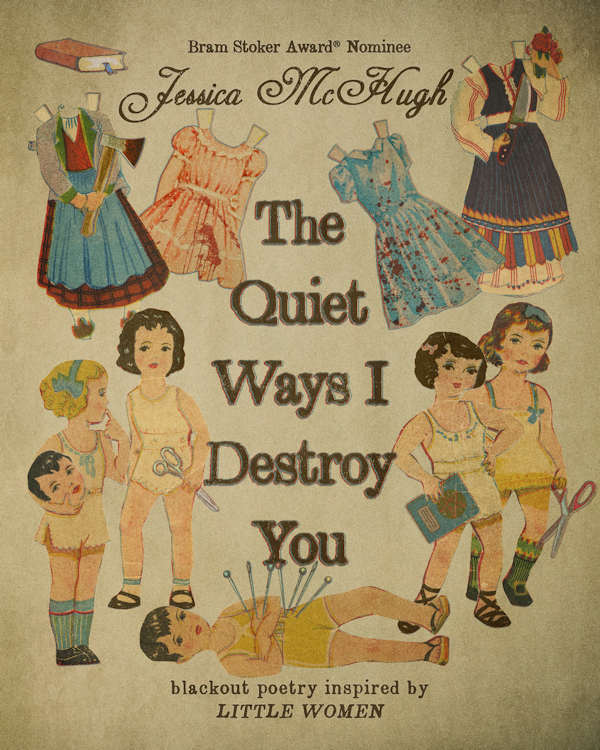 JESSICA MCHUGH: The physical work involved in this project is like nothing I’ve done before. Using four different editions of “Little Women” of varying sizes, I ripped, sewed, painted, sculpted, and illustrated this collection in ways that tested every artistic boundary. I owe a lot of that to working in a tattoo shop, surrounded and inspired by art of all types. I used scraps of my coworkers’ artwork to practice my own, and I learned a lot about letting go of my doubts and insecurities and trusting my artistic instincts. This project also required more time management than ever before to complete 155 blackout poems—more than that, actually. I found around 200 poems total, and completed the art on around 170. From June 21st – December 27th, I kept to my goal of finishing 4-6 pieces a week while accounting for sickness, holidays, etc, while aiming for mid-January, so I actually completed ahead of my self-imposed deadline. I’ve honestly never been more impressed with myself.
JESSICA MCHUGH: The physical work involved in this project is like nothing I’ve done before. Using four different editions of “Little Women” of varying sizes, I ripped, sewed, painted, sculpted, and illustrated this collection in ways that tested every artistic boundary. I owe a lot of that to working in a tattoo shop, surrounded and inspired by art of all types. I used scraps of my coworkers’ artwork to practice my own, and I learned a lot about letting go of my doubts and insecurities and trusting my artistic instincts. This project also required more time management than ever before to complete 155 blackout poems—more than that, actually. I found around 200 poems total, and completed the art on around 170. From June 21st – December 27th, I kept to my goal of finishing 4-6 pieces a week while accounting for sickness, holidays, etc, while aiming for mid-January, so I actually completed ahead of my self-imposed deadline. I’ve honestly never been more impressed with myself.
CHRISTA CARMEN: This is my debut novel, and it’s taken me a number of years to get here, as I started out as more of a short fiction writer and even put out a short fiction collection with Unnerving called Something Borrowed, Something Blood-Soaked in 2018. The Daughters of Block Island is also a decidedly “quieter” horror tale than many of the stories in my collection. There are no chainsaw wielding-Deadite killers or gore-saturated photographs in Daughters, but don’t let that turn you off if you’re in the mood for something unnerving; there’s still a whole slew of scandal, secrets, ghosts, and murder to tickle your horror-loving fancies.
J.A.W. MCCARTHY: This one was fast and dirty for me, compared to my other stories. I was in the middle of another project when the idea for SLEEP ALONE took hold and I had to run with it. I didn’t overthink it; it was almost as if the story controlled me. Ronnie is a very personal character to me, someone who’s selfish and vulnerable and cruel and capable of so much love, all at once. I pride myself on my prose, but I also wanted the voice of the story to be very much Ronnie, as an aging merch girl slogging through this seedy, uncomfortable life would speak. So the tone is a bit more casual, more of that “quick and dirty”, than most of my other recent work.
EDEN ROYCE: While several of the stories included are reprints, a good number of the tales in Who Lost, I Found only appeared in non-digital media before being compiled into this collection. Since those stories were in so many different print publications, it would have taken a lot of time, money, and effort to read them all, so I’ve compiled some of them in this collection.
A few of the stories in this collection, I wrote specifically for certain magazines, as opposed to my usual process of writing a story that once completed, I seek a home for. Who Lost, I Found also includes a brand-new novelette (longer than a short story, but shorter than a novella), which is a length I haven’t tackled before in my writing.
JAN STINCHCOMB: This is the first time I’ve published a full length novel. Most of my previous work has been short form, from flash fiction to novellas. I will say that this book is intensely personal, perhaps because it’s set in places where I or my family members have lived.
The books featured as part of this roundtable range from a poetry collection and a debut novel to a fiction collection and a horror anthology, with even more permutations in between. How do you each decide what medium you want to write or edit in? Do you favor a specific medium (e.g. short fiction, novel, poetry, etc.), or do you prefer publishing a wide range of work?
N.J. GALLEGOS: It’s always been on my bucket list to write a novel and I’ve certainly enjoyed the process of writing a longer piece but short stories are my favorite. They’re compact, easily digestible, and a hell of a lot easier to edit! I’m a huge Stephen King fan and love his short story collections (especially Skeleton Crew and Night Shift) and I’ve always admired the way he can convey so much story in so few words. Naturally, I aspire to that.
Other than The Broken Heart, I go into writing thinking: this’ll be a great short story and then at some point, the characters and plot take over, resulting in novella length work! Weirdly, the decision of what medium to write in isn’t conscious unless there’s a submission call giving strict word counts.
SHANE HAWK: Like I said before, I still feel like fresh meat as I don’t have an extensive backlog for readers to check out. With everything I’ve dipped my toe into so far, I really enjoy the mystery and excitement as a short story panster. I like my characters to take me to places I had no idea I’d be, and the real fun is in that unknown, dark splotch at the end of the tunnel, just outside the reach of your flashlight’s beam. Now, with that being said, I’ve already outlined my debut novel and begun writing it—albeit nowhere near rewrites or completion. Novel writing is a whole different beast and adventure, though some of the magic dissipates with that outline, that ending. Though, my approach so far has mostly been to have empty spots in the road ahead, and it’s a fun challenge to see where the characters and story can really take you in that regard. I’ll also say that I’m working on my first screenplay for a feature film, and it’s an incredibly different-different beast. Almost stripped away and barren, but just enough to get you through. Really, I love it all and frankly wish I had more time to write in different mediums and get all these stories out of my head. Though… I’m only 33 and just getting started. I’ve got time to tell it all. Patience patience patience.
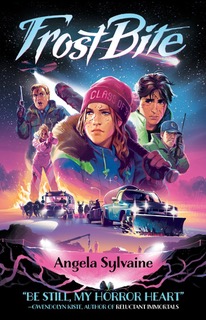 ANGELA SYLVAINE: I love dabbling in all forms of fiction. I’ve had the most publishing success with short fiction, but I really enjoy poetry and longer fiction as well. As far as deciding which medium I want to write in, I like to let the story guide me and dictate what is the best fit, but sometimes it’s also about experimentation. I’ll write a poem that I then adapt as a short story and vice versa. That said, I am dedicating myself more to long fiction in the near future, because Frost Bite is contracted to be a three-book series!
ANGELA SYLVAINE: I love dabbling in all forms of fiction. I’ve had the most publishing success with short fiction, but I really enjoy poetry and longer fiction as well. As far as deciding which medium I want to write in, I like to let the story guide me and dictate what is the best fit, but sometimes it’s also about experimentation. I’ll write a poem that I then adapt as a short story and vice versa. That said, I am dedicating myself more to long fiction in the near future, because Frost Bite is contracted to be a three-book series!
JESSICA MCHUGH: I definitely prefer working in multiple genres and mediums…often at the same time. I’m usually always working on a novel and/or short story, and since I started making blackout poetry, I’m also usually working on a collection while doing poetry commissions. I love having options so I can create according to my mood and energy levels without feeling like I’m forcing myself to be productive.
CHRISTA CARMEN: The first iteration of The Daughters of Block Island was a short story told in epistolary format, and I’ll admit it was strange for me to take an idea conceived as a short piece and expand it. Normally, the medium in which I set out to write is the medium in which I complete the project. I don’t really prefer novels over short stories or vice versa, though that wasn’t always the case.
A few years ago, I felt my strengths lied predominately in short fiction, and didn’t have as much confidence in my novel-writing abilities. That changed with—like anything else—lots of practice, and today, I switch pretty effortlessly between novels, short fiction, nonfiction essays, and children’s picture books, depending on where inspiration strikes.
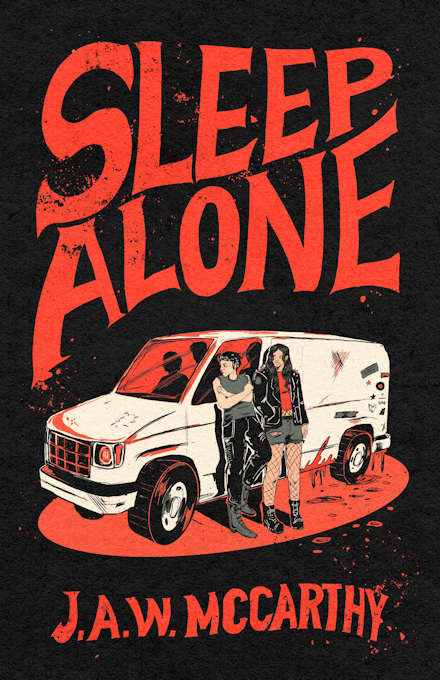 J.A.W. MCCARTHY: I’ve been primarily a short fiction writer, so the novella-length SLEEP ALONE is my longest work to date. When I first started writing, I didn’t think I was capable of good short fiction. I was very longwinded, writing novels even as a little kid. Then when I returned to writing, I found my rhythm with short fiction. Though I’m very good at pushing the limits of “short”—most of my stories want to be 7000+ words, and I’ve been happiest at novella-length like SLEEP ALONE, and with my novelette IMAGO EXPULSIO (THE RED ANIMAL OF OUR BLOOD), which was also recently released as part of SPLIT SCREAM Vol 3 (paired with a novelette from Patrick Barb) by Dread Stone Press.
J.A.W. MCCARTHY: I’ve been primarily a short fiction writer, so the novella-length SLEEP ALONE is my longest work to date. When I first started writing, I didn’t think I was capable of good short fiction. I was very longwinded, writing novels even as a little kid. Then when I returned to writing, I found my rhythm with short fiction. Though I’m very good at pushing the limits of “short”—most of my stories want to be 7000+ words, and I’ve been happiest at novella-length like SLEEP ALONE, and with my novelette IMAGO EXPULSIO (THE RED ANIMAL OF OUR BLOOD), which was also recently released as part of SPLIT SCREAM Vol 3 (paired with a novelette from Patrick Barb) by Dread Stone Press.
EDEN ROYCE: I prefer publishing a wide range of work when it comes to genres, age groups, and length. I began my career with writing short stories, but at some point, I wanted to tackle longer work. Since I had more experience with shorter formats, I wrote my first novel in short stories, then wrote more to connect the individual vignettes later.
When I got my first agent, I was told that it was best to stick with one genre and age group until I got a foothold before I moved into other areas. Thankfully, I didn’t listen to that advice. Because I came to writing professionally later in life, and traditional publishing moves quite slowly, I didn’t want to wait some arbitrary amount of time to get my work and voice out there.
As far as how I decide what medium for a work – short story, novella, novel, or anything else – that depends. Sometimes I plan to write a novel or a short story and it ends up being just that. Other times, I’ve written what I intended to be a short story, and by the time I finish telling the story, I have a novella. Usually, as a rule of thumb, if I feel the need to jot down something resembling an outline, I’ll be writing something longer than 5,000 words.
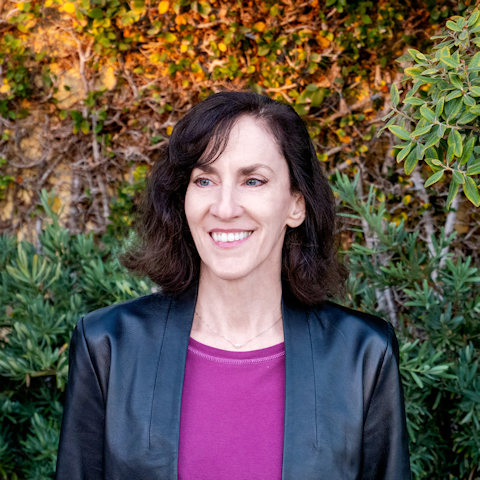 JAN STINCHCOMB: It’s a tie between the short story and the novella/novel. When I’m with one form, I long for the other, though each has its challenges. I am endlessly fascinated by the short story, how each one is like a puzzle for both author and reader to solve. It’s a very tricky form. And the novel never stops surprising me: there are a million ways to write one. As far as choosing between the two goes, the decision is often made for you. There are some projects that are simply too big to be handled within the parameters of the short story, and then there are others that are perfect for a piece of short fiction.
JAN STINCHCOMB: It’s a tie between the short story and the novella/novel. When I’m with one form, I long for the other, though each has its challenges. I am endlessly fascinated by the short story, how each one is like a puzzle for both author and reader to solve. It’s a very tricky form. And the novel never stops surprising me: there are a million ways to write one. As far as choosing between the two goes, the decision is often made for you. There are some projects that are simply too big to be handled within the parameters of the short story, and then there are others that are perfect for a piece of short fiction.
Tremendous thanks to this month’s roundtable authors! Join us next week as we discuss their hopes for the future of horror and what they’re working on next!
Happy reading!
